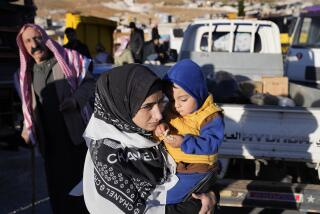Hutu Refugees Who Fled Camps in Tanzania Reverse Course
- Share via
KIGALI, Rwanda — One day after hundreds of thousands of Rwandan refugees in Tanzania defied an order to leave the country by fleeing their camps and marching into surrounding hills and forests, most reversed direction and turned toward home--although few actually crossed the border.
By late Friday afternoon, many of the estimated 400,000 Rwandans who were on the move Thursday had returned to the sites they had abandoned. Tanzanian soldiers have reportedly surrounded the camps, attempting to keep refugees from resettling in them.
Aid workers described a scene of ordered chaos, as lines of refugees who on Thursday trudged south--away from the Rwandan border--suddenly turned north Friday. By early evening relief workers and U.N. officials estimated that between 1,500 and 5,000 of those refugees had returned to Rwanda.
Friday’s events were the latest chapter in Rwanda’s 28-month refugee crisis, which took a dramatic turn last month when more than 600,000 Rwandans walked home after two years in camps around Goma, Zaire. But another 400,000 Rwandans remained in camps in far northwestern Tanzania.
Earlier this month, the Tanzanian government announced that the refugees must return home by Dec. 31.
Like those in Zaire, most of the Rwandan refugees in Tanzania are members of Rwanda’s Hutu ethnic majority who fled in 1994. They feared retribution after a Hutu extremist government tried to exterminate the country’s Tutsi minority--at least 800,000 of whom were slaughtered--but was stopped by a Tutsi-led rebel force.
With the refugee focus shifting to Tanzania, Canada decided Friday to cut short the multinational relief operation planned for eastern Zaire, saying the situation there had changed so much there was little need for it.
The Canadians were leading a humanitarian mission, with American participation, to help hundreds of thousands of Rwandan Hutus fleeing fighting between Zairian rebels and government forces in eastern Zaire.
More to Read
Sign up for Essential California
The most important California stories and recommendations in your inbox every morning.
You may occasionally receive promotional content from the Los Angeles Times.













